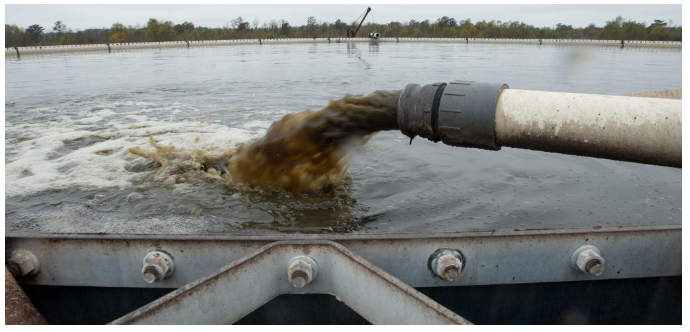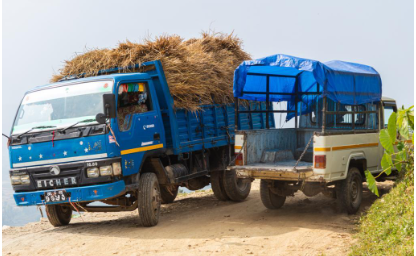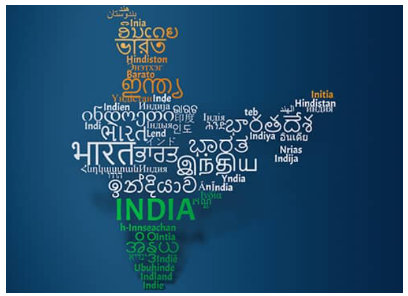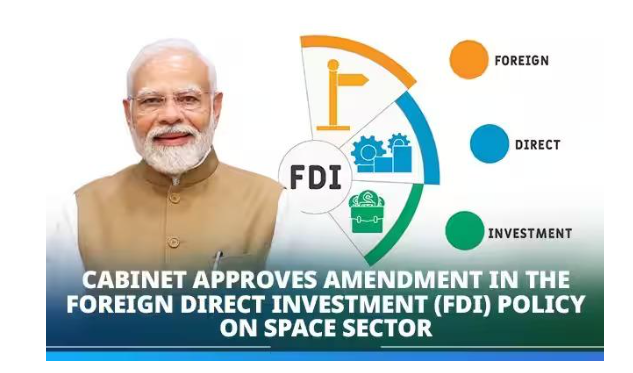Monday, 4th March 2024
Employment Equality: Marriage Shouldn't Lead to Women's Military Dismissal
In News: The Supreme Court (SC) has instructed the Ministry of Defence to provide a compensation of Rs 60 lakh to a former permanent commissioned officer in the Military Nursing Service (MNS).
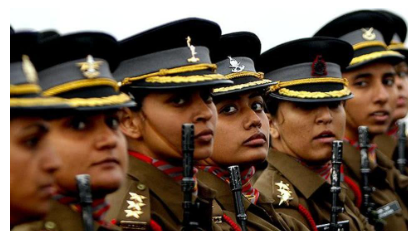
The Importance of Enhancing Women's Representation in the Armed Forces
- Gender Neutrality in Recruitment
- Gender should not be a limiting factor; qualifications should determine eligibility.
- In modern warfare, technical expertise and decision-making skills outweigh mere physical strength.
- Military Readiness Boost
- A mixed-gender force strengthens the military, addressing declining recruitment and retention rates.
- Inclusion of women in combat roles contributes to overall military readiness.
- Enhanced Effectiveness
- Blanket restrictions on women limit the selection of the most capable individuals for various roles.
- Adaptation is essential for integrating women into combat units, requiring cultural and training changes.
- Tradition vs. Evolution
- Evolving cultures can facilitate the integration of women into combat roles.
- Training programs should support the shift away from traditional gender norms.
- Global Trends
- The U.S. and the UK's decisions to open combat positions to women mark progress toward gender equality.
- In 2013, the U.S. allowed women in combat, and in 2018, the UK permitted women in elite special forces.
Strategies for Progress
- Comprehensive Policy Reforms
- Eliminate discriminatory practices for women officers.
- Ensure equal access to permanent commissions in all branches and ranks.
- Awareness Programs and Sensitivity Training
- Conduct regular programs to promote a culture of gender equality and inclusion.
- Enhance awareness among military personnel regarding respect and equal opportunities.
- Support Systems for Women Officers
- Establish facilities tailored to women's needs, including maternity leave and childcare assistance.
- Provide adequate medical facilities to address women officers' specific requirements.
|
UPSC Previous Year Questions Prelims (2017) Q. Which of the following gives ‘Global Gender Gap Index’ ranking to the countries of the world? (a) World Economic Forum Ans: (a) Mains (2019) Q. What are the continued challenges for Women in India against time and space? Mains (2021) Q. Discuss the desirability of greater representation to women in the higher judiciary to ensure diversity, equity and inclusiveness. |
Source: IE
India Unveils Its Inaugural Hydrogen Fuel Cell Ferry
In News: In a virtual ceremony, the Prime Minister of India recently inaugurated the nation's inaugural hydrogen fuel cell ferry boat, constructed indigenously.
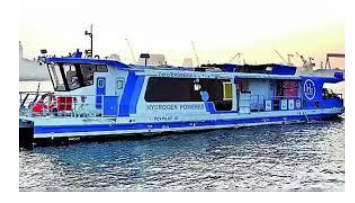
Key Highlights About the Ferry
- Flagging Off and Project Inauguration
- Integral part of a ₹17,300-crore project at the V.O. Chidambaranar Port.
- Foundation stone laid for the outer harbor development.
- Construction at Cochin Shipyard
- The ferry was built at the Cochin Shipyard.
- Urban Mobility Impact
- Aims to enhance urban mobility through inland waterways.
- Represents a significant move towards embracing clean energy for the nation's net-zero commitments.
Harit Nauka Initiative
- Unveiling by Ministry of Ports, Shipping and Waterways
- The guidelines for inland vessels were introduced in January 2024.
- Green Fuel Usage Targets
- States directed to use green fuels for 50% of inland waterways-based passenger fleets in the next decade.
- Ambitious goal of achieving 100% green fuel usage by 2045.
- Alignment with Maritime Amrit Kaal Vision 2047
- Initiative aims to reduce greenhouse gas emissions.
- Global Trend towards Green Fuels
- Reflects the global shipping industry's shift to green fuels.
- Addresses environmental concerns, sustainability goals, and advancements in green fuel technologies.
Hydrogen Fuel Cell Overview
- Clean, Reliable, and Efficient:
- Hydrogen fuel cells provide clean, reliable, and efficient electric power.
- Hydrogen as Fuel
- Utilizes hydrogen to drive an electrochemical process, producing electricity.
- Water and heat are the only by-products.
- Abundance of Hydrogen
- Hydrogen is abundant on Earth, offering a cleaner alternative fuel option.
- Significance of Hydrogen Fuel Cells
- Zero Emission Solutions: Among the best zero-emission solutions with only water emissions.
- Tailpipe Emissions: No emissions other than water, contributing to environmental friendliness.
- Quiet Operation: Low noise levels make them suitable for various contexts, including hospitals.
Government Initiatives for Renewable Energy
- National Hydrogen Energy Mission (NHM)
- Announced in the Union Budget for 2021-22.
- Aims to develop a roadmap for utilizing hydrogen as an energy source.
- Other Renewable Energy Initiatives
- Jawaharlal Nehru National Solar Mission (JNNSM)
- International Solar Alliance
- PM- KUSUM
- National Wind-Solar Hybrid Policy
- Rooftop Solar Scheme
|
UPSC Previous Year Questions Prelims (2010) Q. Hydrogen fuel cell vehicles produce one of the following as “exhaust” (a) NH3 Ans: (c) Exp:
Mains (2021) Q. Describe the major outcomes of the 26th session of the Conference of the Parties (COP) to the United Nations Framework Convention on Climate Change (UNFCCC). What are the commitments made by India in this conference? |
Source: TH
Addressing the Challenge of Prolonged Trial Delays: The Asian Resurfacing vs. Central Bureau of Investigation Case in India
In News: The Supreme Court's five-judge Constitution bench reversed its 2018 Asian Resurfacing v. Central Bureau of Investigation decision, emphasizing that a stay order should only conclude after hearing all parties involved in the case.
Challenges of Prolonged Trials: Unraveling the Impact of Asian Resurfacing Case Ruling in India
- Three-Tier Judicial System
- Challenging trial court decisions at every stage.
- Stay orders impacting trial duration.
- Stay Orders and Trial Delays
- Temporary halting of proceedings.
- Invariably leading to prolonged trials, benefiting either side.
- Asian Resurfacing Case Ruling (2018)
- SC addressing cases involving the Prevention of Corruption Act.
- Setting limitations on the duration of interim stay orders.
- Impact on Legal Landscape
- Stay orders valid for six months.
- Automatic rescinding of stay orders after the specified period.
- Unforeseen Consequences
- Lawyers citing the ruling to alter legal status.
- Increase in cases challenging interim orders, burdening the legal system.
- Key Legal Questions Raised
- SC's authority to order automatic revocation of interim orders.
- Directing HCs to decide cases within fixed timelines.
- Arguments and Reversal
- Concerns about arbitrary decisions due to automatic vacation of stay.
- Infringement on HC's discretion under Article 226(3).
- Judiciary's role versus legislative power in deciding timelines.
- Rationale Behind Reversal
- Acknowledgment of unintentional injustice in the pursuit of justice.
- Discretion given to lower courts familiar with grassroots issues.
- Avoiding court-created legislation and respecting legislative powers.
- Constitutional Considerations
- SC emphasizing different patterns in pending caseloads.
- Automatic vacation after six months deemed counterproductive to justice.
- Affirmation of legislative provisions in Article 226(3).
- Conclusion
- Balancing the pursuit of justice with the need for flexibility.
- Recognition of the complexities in the legal landscape.
- Upholding the role of lower courts and legislative authority.
Source: IE
Government Modifies Regulations Regarding Postal Ballots
In News: In upcoming Lok Sabha and State Assembly elections, citizens aged 85 and above are now eligible to opt for postal ballots, marking a rule change by the government that raised the age limit from 80 years.
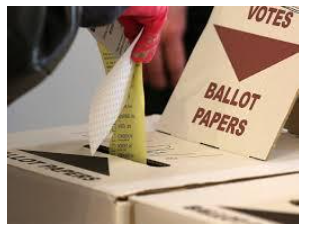
Overview of Postal Voting
Definition
- Postal voting, also referred to as absentee voting, allows electors to cast their votes by mail instead of in person at a polling station.
- It is especially beneficial for individuals facing challenges voting in person due to various reasons.
Eligibility Criteria
- Service Voters: Members of armed forces, paramilitary forces, and government employees deployed on election duty away from their home constituencies.
- Absentee Voters: Individuals unable to vote in person due to reasons such as work, illness, or disability.
- Electors on Election Duty: Government officials and polling staff assigned duties at polling stations other than their own.
- Electors under Preventive Detention: Individuals detained under preventive custody orders during the election period.
Eligibility during Covid Pandemic
- During the Covid-19 pandemic, the facility was extended to those infected or suspected to be infected with the virus.
- Initially, there was a proposal to include those above 65 years, but it was later revised to 80 years due to practical constraints.
Significance of Postal Ballots
- Postal ballots play a crucial role in
- Ensuring that eligible voters participate in the electoral process, even when unable to vote in person.
- Expanding the accessibility of the electoral process for a more inclusive and representative democracy.
Challenges and Issues
- Vote Buying: Risks of someone else casting the vote on behalf of the voter for monetary gain.
- Freedom of Voting & Secrecy Concerns: Potential observation of the voting process at the voter's home, affecting freedom and secrecy.
- Reliability and Delay of Postal Services: Unforeseeable conditions in postal services may affect reliability and cause delays.
Recent Amendment to Postal Voting Rules
The government, in consultation with the Election Commission, amended the Conduct of Election Rules (1961):
- Raised the minimum age for senior citizens eligible for postal ballot to 85 years from 80 years.
- Initially extended to those above 80 years, persons with disabilities, poll officers, and Covid-positive persons during the 2020 Bihar assembly poll.
- A review showed minimal usage by 80-plus voters, leading to the amendment.
Source: IE
Exercise Samudra Laksamana
In News: The Exercise Samudra Laksamana commenced on February 28 and is scheduled to extend until March 2. The naval drill is being conducted at or off the coast of Visakhapatnam.
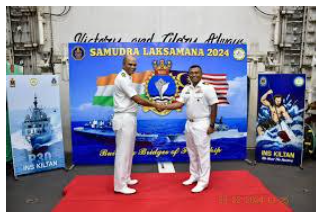
Exercise Samudra Laksamana: Joint Naval Drill
Overview
- Exercise Samudra Laksamana is a collaborative naval exercise involving the Indian Navy and the Royal Malaysian Navy.
- This edition marks the third iteration of the exercise.
Participating Ships
- Indian Naval Ship Kiltan and Royal Malaysian Ship KD Lekir are actively engaged in the exercise.
- The activity comprises harbor professional interactions followed by operational phases at sea.
Harbor Phase
- Crew members from both ships participate in diverse professional interactions.
- Activities include Subject Matter Expert Exchange, discussions on mutual interests, sports fixtures, and various other interactions.
- The primary goal is to enhance knowledge, share best practices, and foster cooperation on maritime aspects.
Sea Phase
- During the sea phase, units collaboratively refine their skills through various operations at sea.
- The exercise is designed to bolster bonds and improve interoperability between the Indian and Royal Malaysian Navy.
INS Kiltan: Key Points
- INS Kiltan is an indigenously built anti-submarine warfare stealth corvette.
- It is the third vessel among the four Kamorta-class corvettes constructed under Project 28.
- The ship is named after one of the islands in the strategically located Lakshadweep and Minicoy group.
- Designed by the Indian Navy’s Directorate of Naval Design, it is built by Garden Reach Shipbuilders & Engineers (GRSE) in Kolkata.
Source: PIB
Bureau of Energy Efficiency
In News: In New Delhi, the Bureau of Energy Efficiency (BEE) celebrated its 22nd Foundation Day.
Bureau of Energy Efficiency (BEE)
- Establishment
- Founded in 2002 under the provisions of the Energy Conservation Act, 2001.
- Objective
- The primary goal is to reduce energy intensity in the Indian economy.
- Function and Duties
- Coordinates with designated consumers, agencies, and organizations.
- Recognizes, identifies, and utilizes existing resources and infrastructure.
- Performs functions assigned under the Energy Conservation Act.
- Regulatory Functions
- Develops minimum energy performance standards for equipment and appliances.
- Establishes standards for commercial buildings.
- Develops energy consumption norms for designated consumers.
- Nodal Ministry
- Ministry of Power
State Energy Efficiency Index 2023
- Initiative
- Fifth edition of The State Energy Efficiency Index (SEEI) by BEE, in collaboration with Alliance for an Energy Efficient Economy.
- Purpose
- To evaluate the annual progress of energy efficiency implementation in states.
- Assessment Areas
- Buildings
- Industry
- Municipal services
- Transport
- Agriculture
- Electricity distribution companies (DISCOMs)
- Cross-sector initiatives
- Categories in SEEI 2023
- Front runner (>=60)
- Achiever (50-59.75)
- Contender (30-49.75)
- Aspirant (<30)
- Grouping
- Based on total final energy consumption (TFEC):
- Group 1 (>15 million tonnes of oil equivalent (MTOE))
- Group 2 (5-15 MTOE)
- Group 3 (1-5 MTOE)
- Group 4 (<1 MTOE)
- Top-performing States
- Karnataka (Group 1)
- Andhra Pradesh (Group 2)
- Assam (Group 3)
- Chandigarh (Group 4)
Source: PIB
The Genome India Project
In News: The Genome India Project has declared the successful completion of sequencing 10,000 genomes of Indian individuals.
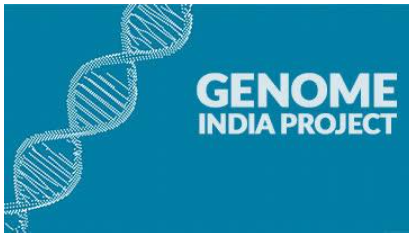
Genome India Project: Unraveling India's Genetic Diversity
- Overview
- The Genome India Project is a nationwide initiative aimed at conducting whole-genome sequencing on representative populations throughout India.
- Objective
- The primary goal is to undertake whole-genome sequencing and analyze the data of 10,000 individuals, reflecting the diverse genetic makeup of the country.
- This pioneering mission is supported and funded by the Department of Biotechnology, Government of India.
Project Characteristics
- Mission-Mode Consortium
- The project operates as a mission-mode, multi-institutional consortium, marking a groundbreaking endeavor in India.
Specific Aims
- Genetic Variations Catalog
- Develop a comprehensive catalog of genetic variations, encompassing common, low frequency, rare, single nucleotide polymorphisms (SNPs), and structural variations within the Indian population.
- Reference Haplotype Structure
- Establish a reference haplotype structure specific to Indians, serving as a valuable resource for imputing missing genetic variations in future studies.
- Genome-Wide Arrays
- Design cost-effective genome-wide arrays for research and diagnostics, promoting accessibility in genetic studies.
- Biobank Establishment
- Create a biobank for storing DNA and plasma samples, laying the foundation for future research endeavors.
Source: TH
Foreign Exchange Reserves
In News: Recently, India witnessed a significant increase in its foreign exchange reserves, rising by $2.98 billion to reach $619.07 billion.
Foreign Exchange Reserves: An Overview
Definition
- Foreign Exchange Reserves (Forex Reserves) are reserve assets held in foreign currencies by a central bank.
Composition
- Foreign Currency Assets (FCAs): Held in currencies like the US dollar, euro, pound sterling, Australian dollar, and Japanese yen.
- Gold
- SDR (Special Drawing Rights): The reserve currency with the IMF.
- RTP (Reserve Tranche Position): Reserve capital with the IMF.
Custodian
- The Reserve Bank of India (RBI) serves as the custodian of India's foreign exchange reserves.
Purpose
- Back Liabilities: Used to back liabilities in the country's own issued currency.
- Exchange Rate Support: Supports the exchange rate and helps set monetary policy.
- Crisis Preparedness: Ensures backup funds if the national currency rapidly devalues or faces insolvency.
- Market Intervention: Used to stabilize the value of the national currency, e.g., selling dollars in the market to curb depreciation of the Rupee.
- International Image: A good forex reserve enhances a country's international standing, instilling confidence in trading partners.
- Trade Attraction: A substantial reserve attracts foreign trade and fosters positive relations with trading nations.
Source: ET
Amrabad Tiger Reserve
In News: The recent release of the 'Status of Leopards in India' report indicates a significant rise in the leopard population within the Amrabad Tiger Reserve.
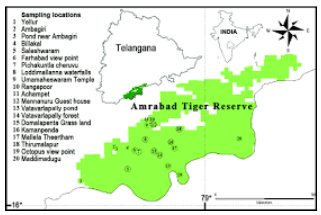
Amrabad Tiger Reserve: Exploring Telangana's Wildlife Sanctuary
Location
- Situated in the Nagarkurnool and Nalgonda districts in southern Telangana.
- Encompasses 2611.4 square kilometers, ranking as one of India's largest tiger reserves and the second-largest in core area.
Formation
- Originally part of the 'Nagarjunasagar-Srisailam Tiger Reserve.'
- Post-state bifurcation, the northern section became the 'Amrabad Tiger Reserve' for Telangana, while the southern part retained the name 'NSTR' in Andhra Pradesh.
Geography
- Nestled within the Nallamala Forest, it hosts diverse flora and fauna.
- Feeds major reservoirs like Srishailam Dam and Nagarjunsagar Dam through the Krishna River and its perennial streams.
Flora
- Dense grass covers 30%, with scattered occurrence in an additional 20%.
- Dominant tree species: Terminalia tomentosa, Hardwickia binata, Madhuca latifolia, Diospyros melanoxylon, Gardenia latifolia, among others.
Fauna
- Home to diverse wildlife, including Tigers, Leopards, Wild Dogs, Indian Wolf, Indian Fox, Rusty-spotted Cat, Small Indian Civet, Sloth Bear, Honey Badger, and Wild Boar.
- Hosts over 303 bird species, featuring Eagles, Pigeons, Doves, Cuckoos, Woodpeckers, Drongos, and more.
Source: TT
National Electronic Fund Transfer
In News: Recently, the National Electronic Funds Transfer (NEFT) achieved a record-breaking daily transaction volume, reaching an unprecedented 4.10 crore transactions.
National Electronic Fund Transfer (NEFT): Overview
- About NEFT
- NEFT is a centralized payment system owned and operated by the Reserve Bank of India (RBI).
- It facilitates electronic money transfers across the nation.
- Most Indian banks offer NEFT services through internet and mobile banking platforms.
- Key Features
- Allows fund transfers between accounts in different banks participating in the NEFT system.
- Open to organizations, companies, and individuals for seamless interbank transactions.
- Transactions are processed in half-hourly batches, as per RBI guidelines.
- Minimum transfer value: Rs. 1; No maximum limit.
- Advantages of NEFT
- Round-the-Clock Availability
- Accessible every day of the year.
- Near-Real-Time Funds Transfer
- Ensures secure and swift settlement.
- Pan-India Coverage
- Extensive network covering branches of all types of banks.
- Convenient Remittances
- Beneficiaries need not visit a bank branch.
- Remitters can initiate transactions through internet banking.
- Confirmation Alerts
- Remitters receive positive confirmation via SMS or email upon credit to the beneficiary account.
- Penal Interest Provisions
- Penalties for delays in credit or return of transactions.
- RBI Charges
- No charges imposed by RBI on banks.
- Customer Benefits
- Savings account customers enjoy free online NEFT transactions.
- Transaction charges are capped by the RBI.
- Diverse Applications
- Apart from fund transfers, NEFT is utilized for credit card payments, loan EMIs, inward foreign exchange remittances, etc.
- Transactions carried out through NEFT are legally backed.
- It also serves for one-way fund transfers from India to Nepal.
Source: MC
Maratha Reservation: Justification or Force
In News: A recent article explores the unanimous resolution passed by the Maharashtra State Assembly, providing a 10% reservation in education and government employment for the Maratha community.
Key Facts About the Maratha Community in India
- Legacy of Warriors and Rulers
- Prominent community primarily in Maharashtra, historically known for military prowess and leadership under the 17th-century Maratha Empire established by Shivaji Maharaj.
- Social Structure
- Diversified into professions like agriculture, trade, and politics.
- Top layer, Kshatriyas (warriors), includes surnames like Deshmukh, Bhonsle, More, Shirke, Jadhav, while the rest belong to the agrarian sub-caste called Kunbi.
- Influence Beyond Maharashtra
- Powerful Maratha dynasties like the Gaekwads, Scindias, and Bhonsles settled outside Maharashtra.
Highlights of the Maratha Reservation Bill
- Reservation for Maratha Community
- Identifies Marathas as socially and educationally backward, providing 10% reservation in government job recruitment and educational institution admissions.
- Over and above existing reservations in the state.
- Creamy Layer
- Reserved for those not falling in the creamy layer bracket based on family income criteria.
- Carry Forward of Vacancies
- Vacant reserved seats carried forward for up to five years.
- Penalty
- Admissions or appointments against provisions void.
- Procedure for Issuing Caste and Validity Certificate
- Existing Acts governing caste certificates apply.
Arguments in Favor of Maratha Reservation
- Recommended by MSBCC
- Narayan Rane Committee and Gaikwad Commission endorsed 16% reservation, later challenged and stayed.
- Maharashtra State Backward Class Commission identified Marathas as socially and educationally backward.
- Historical Marginalization
- Despite historical dominance, Marathas claim marginalization in education and employment.
- Gaikwad Commission highlights poor socio-economic indicators.
- Economic Disparities
- Rural Marathas face economic challenges, justifying reservation for better access.
- Inadequate Representation
- Shukre Commission finds inadequate representation in public services.
- Social Mobility
- Reservation facilitates upward social mobility within the community.
Arguments Against Maratha Reservation
- Lack of Social and Economic Backwardness
- Critics argue Marathas historically held significant land ownership and political power.
- Need for a Detailed Inquiry
- Concerns about the survey's speed and lack of transparency.
- Legal Concerns
- Extending reservations beyond the 50% cap raises legal concerns.
- Kunbi Certificate Controversy
- Controversy over extending OBC reservation to extended relatives.
- Political Motivations
- Critics question political motivations behind the reservation push.
Way Forward
- Comprehensive Socio-economic Census
- Address intra-community variations for targeted affirmative action.
- Evidence-Based Legislation
- Ensure legal soundness with robust empirical data.
- Comprehensive Approach
- Combine reservation with welfare, skill development, and infrastructure projects.
- Fair Competition without Discrimination
- Promote equality, encourage competition on a level playing field.
- Balancing Reservation and Merit
- Evaluate administration efficiency while ensuring merit is not neglected.
|
UPSC Previous Year Questions Prelims (2010) Q.What was the immediate reason for Ahmad Shah Abdali to invade India and fight the Third Battle of Panipat? (a) He wanted to avenge the expulsion by Marathas of his viceroy Timur Shah from Lahore (b) The frustrated governor of Jullundhar Adina Beg Khan invited him to invade Punjab (c) He wanted to punish the Mughal administration for non-payment of the revenues of the Chahar Mahal (Gujarat, Aurangabad, Sialkot & Pasrur) (d) He wanted to annex all the fertile plains of Punjab up to the borders of Delhi to his kingdom Ans: A Mains (2018) Q. Whether the National Commission for Scheduled Castes (NCSC) can enforce the implementation of constitutional reservation for the Scheduled Castes in the religious minority institutions? Examine. |
Source: TH
Share the article
Edukemy’s Current Affairs Quiz is published with multiple choice questions for UPSC exams
MCQ
Get Latest Updates on Offers, Event dates, and free Mentorship sessions.

Get in touch with our Expert Academic Counsellors 👋
Frequently Asked Questions
UPSC Daily Current Affairs focuses on learning current events on a daily basis. An aspirant needs to study regular and updated information about current events, news, and relevant topics that are important for UPSC aspirants. It covers national and international affairs, government policies, socio-economic issues, science and technology advancements, and more.
UPSC Daily Current Affairs provides aspirants with a concise and comprehensive overview of the latest happenings and developments across various fields. It helps aspirants stay updated with current affairs and provides them with valuable insights and analysis, which are essential for answering questions in the UPSC examinations. It enhances their knowledge, analytical skills, and ability to connect current affairs with the UPSC syllabus.
UPSC Daily Current Affairs covers a wide range of topics, including politics, economics, science and technology, environment, social issues, governance, international relations, and more. It offers news summaries, in-depth analyses, editorials, opinion pieces, and relevant study materials. It also provides practice questions and quizzes to help aspirants test their understanding of current affairs.
Edukemy's UPSC Daily Current Affairs can be accessed through:
- UPSC Daily Current Affairs can be accessed through Current Affairs tab at the top of the Main Page of Edukemy.
- Edukemy Mobile app: The Daily Current Affairs can also be access through Edukemy Mobile App.
- Social media: Follow Edukemy’s official social media accounts or pages that provide UPSC Daily Current Affairs updates, including Facebook, Twitter, or Telegram channels.

